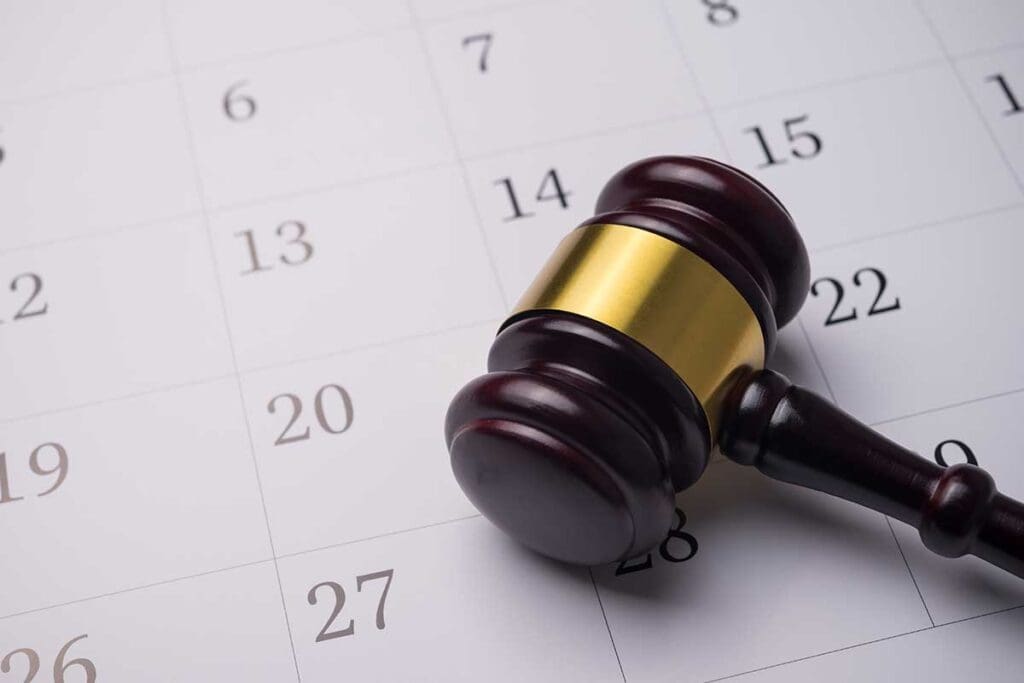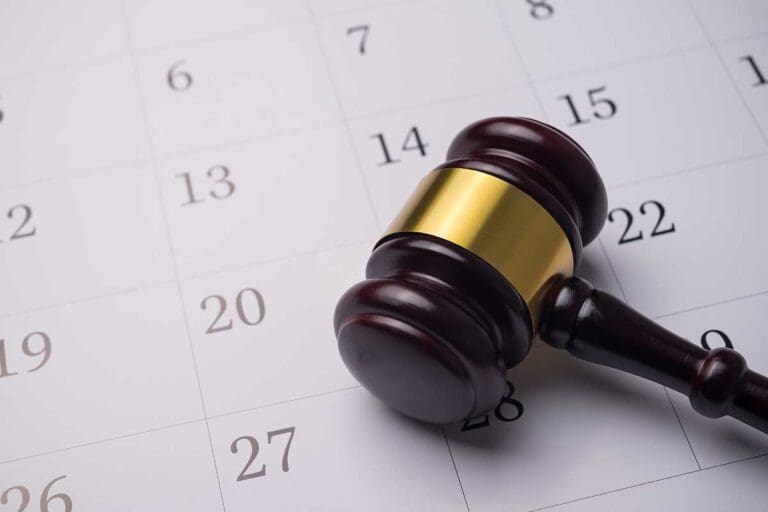Key Takeaways
Most personal injury cases take anywhere from a few months to a few years to resolve.
The timeline depends on factors like the severity of injuries, evidence gathering, and negotiation with insurance companies.
Cases that settle out of court are resolved faster than those that go to trial.
Patience is often necessary to secure a fair settlement rather than accepting a quick, low offer.
Working with an experienced attorney can streamline the process and protect your interests.
Typical Timeline of a Personal Injury Case
While no two cases are identical, most personal injury claims follow a similar process. Below is a breakdown of the key phases:
1. Seeking Medical Treatment (Immediately After the Accident)
Your health is the top priority. After an accident:
- Seek immediate medical attention for your injuries.
- Follow all treatment plans and attend follow-up appointments.
- Keep detailed records of medical bills, diagnoses, and recovery progress.
Timeframe: This phase can take days, weeks, or months depending on the severity of your injuries.
2. Consulting a Personal Injury Attorney (1-2 Weeks)
Once you’ve received initial medical care, consult a personal injury attorney to discuss your case.
- The attorney will evaluate your claim and advise on the next steps.
- They may begin gathering preliminary evidence, such as accident reports, medical records, and witness statements.
- You’ll sign a contingency fee agreement, meaning you don’t pay unless they win your case.
Timeframe: Finding the right attorney and starting the process typically takes 1–2 weeks.
3. Investigation and Evidence Gathering (1-3 Months)
Your attorney will begin a thorough investigation into your accident and injuries. This phase involves:
- Collecting police reports, medical records, and photos of the accident scene.
- Interviewing witnesses and obtaining written statements.
- Consulting experts, such as accident reconstruction specialists or medical professionals, if needed.
Why it’s important: Solid evidence is the foundation of a strong case, and this process cannot be rushed.
Timeframe: 1–3 months depending on the complexity of the accident and availability of evidence.
4. Demand Letter and Negotiations (3-6 Months)
Once your attorney has gathered all evidence and you’ve reached a point of “maximum medical improvement” (MMI), they will send a demand letter to the at-fault party’s insurance company.
- The demand letter outlines your damages, including medical expenses, lost wages, and pain and suffering.
- The insurance company reviews the claim and responds with an offer, often starting low.
- Negotiations begin between your attorney and the insurer to reach a fair settlement.
Timeframe: This phase can take 3–6 months, depending on the insurer’s response time and willingness to negotiate.
5. Filing a Lawsuit (6-12 Months)
If negotiations fail to result in a fair settlement, your attorney may recommend filing a lawsuit.
- The Complaint: Your attorney files a formal complaint in court.
- The Response: The defendant (at-fault party) has time to respond to the complaint.
- Discovery Phase: Both sides exchange evidence, documents, and depositions.
The discovery phase is often the longest part of the process, as it involves gathering all details for trial.
Timeframe: Lawsuits may take 6–12 months before a trial date is set, depending on the court’s schedule.
6. Mediation and Settlement Discussions (1-3 Months)
Before trial, both sides may participate in mediation to try to resolve the case. Mediation involves:
- A neutral third-party mediator facilitating settlement discussions.
- Both sides presenting their evidence and negotiating further.
Many cases settle during this phase because going to trial can be time-consuming and costly.
Timeframe: Mediation can take 1–3 months, depending on availability and negotiation success.
7. Trial (1-3 Years, Rarely Longer)
If mediation fails, your case proceeds to trial. While trials can be unpredictable, your attorney will represent you to fight for fair compensation.
- Both sides present evidence, witnesses testify, and the judge or jury makes a decision.
- Trials can last anywhere from a day to several weeks, depending on complexity.
Timeframe: Preparing for trial can take 1–3 years due to scheduling, pre-trial motions, and evidence presentation.
Key Factors That Influence the Timeline
Several factors can impact how long your personal injury case takes to resolve:
- Severity of Your Injuries: Cases involving serious injuries take longer because it’s crucial to understand long-term medical costs.
- Disputes Over Fault: If the at-fault party disputes liability, additional evidence and expert opinions may be needed.
- Insurance Company Tactics: Insurers may intentionally delay the process to pressure you into accepting a lower settlement.
- Willingness to Settle: Some cases resolve quickly through fair negotiations, while others require litigation to achieve justice.
- Court Scheduling: If your case goes to trial, the court’s calendar and delays can add months or even years to the process.
Why It’s Worth the Wait
While it’s tempting to accept a quick settlement, patience can pay off. Quick settlements often fail to cover the full extent of your damages, especially future medical expenses or lost income. Your attorney’s goal is to ensure you receive compensation that truly reflects your needs and losses.
How a Personal Injury Attorney Can Help Speed Up the Process
Working with an experienced personal injury attorney ensures your case moves forward efficiently while protecting your best interests. Your attorney will:
- Gather evidence promptly and file all necessary paperwork.
- Handle communications and negotiations with insurance companies.
- Represent you in court if a fair settlement cannot be reached.
Having legal representation also discourages insurers from using stalling tactics, as they know your attorney is prepared to take the case to trial if necessary.
Conclusion
The timeline for resolving a personal injury case can vary significantly based on factors like the complexity of the case, the severity of injuries, and whether the case settles or goes to court. While most cases are resolved within a few months to a year, those that require litigation may take longer.
The most important thing to remember is that securing fair compensation is worth the time and effort. By working with an experienced personal injury attorney, you can focus on recovery while your attorney fights for the justice and financial recovery you deserve.







